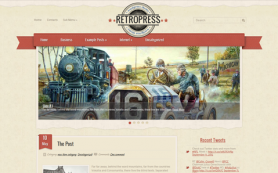This year, technology is more ingrained in our lives than ever before. We’re reliant on WiFi calling, email and instant messaging services to communicate with colleagues, friends and family; we order everything from taxis, meals and groceries using smartphone apps and we live a second life on the internet– sharing photos, status updates and tweets with our very own online community.
It’s easy to see how central a role tech plays in our everyday lives.
But has technology had the same kind of disruptive impact on the education sector? And are we imbuing the next generation with the skills they need to thrive in a rapidly changing world?
In this piece, we’ve identified three of the best technologies for education.
Virtual reality
Virtual reality has always been an obsession for gaming fans. Today, it’s a reality. With competing VR devices released by Oculus, PlayStation, Valve and many more, there are so many high quality options to choose from. We can transport ourselves onto rickety roller coaster rides, zombie apocalypses and intergalactic adventures.
But we’ve also seen how VR can be utilised in myriad other ways. It’s become a one-of-a-kind tool for educators. It gives them the ability to simulate on the job environments without any of the potential repercussions of on the job experience.
VR has been used to create flight simulators for budding pilots, to imitate human anatomy for nascent surgeons and to mimic jumping from a plane with a parachute for new soldiers.
In the classroom, VR is bound to take a more prominent role moving forward. As an example, virtual reality can be used to recreate sites of historical significance. Teachers can take their students on a stroll through Ancient Egypt.
At the moment, the price of VR technology can be slightly prohibitive but as it becomes more and more accessible and more and more useful, it is going to become difficult for most educators to ignore.
Cloud computing
One of the main concerns educators have about technology is how it might further deepen the divide between wealthy and poor students.
Cloud computing helps to close this gap. As long as you have an internet connected device and login details, you can access the same tools as everyone else. There is no longer a need to shell out on the advantages that expensive textbooks and guides can give you, cloud computing helps to level the playing field and improve accessibility.
If you have the right people overseeing the move, migrating to the cloud can be extremely simple. And it should be a priority for educators everywhere.
Speech to text tools
Tailoring the learning experience to every student has long been a puzzle that educators have struggled to solve. A blanket approach to learning can only ever have limited effectiveness. While it isn’t the only answer, speech to text tools can make a difference to the lives of students who struggle with writing.
Speech to text tools like Siri are commonplace now. Why not use the same technology to aid the learning and expression of students with dyslexia for example?
It’s another tool educators can use to enhance the quality of the learning experience for their students.
 Members Area
Members Area




